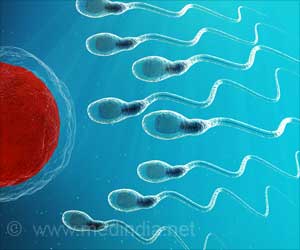However, the benefits of exercise in patients with primary mitochondrial diseases, which are heterogeneous and caused by a variety of genetic mutations, were largely unknown.
Exercise in Mitochondrial Disease
The present study demonstrated that the benefits of endurance exercise can vary based on the type of mutation involved in mitochondrial disease. While the benefits of exercise may outweigh the risks, genetic status should be considered when recommending it as therapy.
Primary mitochondrial diseases represent the most prevalent inherited metabolic disorders, affecting approximately 1 in every 4,200 people. These disorders can be caused by hundreds of different mutations in the nuclear DNA (DNA within our cells) or mitochondrial DNA (mtDNA, or the DNA within the mitochondria within our cells).
Universal treatments for these patients are limited. However, endurance exercise has been shown to improve mitochondrial function in healthy people and reduce the risk of developing secondary metabolic disorders like diabetes or neurodegenerative disorders.
However, these recommendations were based on healthy people without primary mitochondrial disease. Therefore, researchers wanted to determine the effectiveness for these patients and whether they are benefitting from endurance exercise.
“There was not a concensus among clinicians who see patients with mitochondrial disease whether endurance exercise truly offers benefits,” said Patrick Schaefer, PhD, a postdoctoral fellow at the Center for Mitochondrial and Epigenomic Medicine at CHOP and the first author of the study. “Exercise helps create more mitochondria, but if those mitochondria still have the mutations associated with primary mitochondrial disease, there is a chance that exercise may put some patients at risk.”
Because of the heterogeneity of primary mitochondrial disease among patients, the researchers used animal models to study five mutations responsible for the disease. The goal of the study was to determine the relationship between mitochondrial mutations, endurance exercise response, and the underlying molecular pathways in these models with distinct mitochondrial mutations.
Treatment Strategies for Mitochondrial Diseases
The study found that endurance exercise had different impacts on the models depending on the mutation involved. Exercise improved response in the model with the mtDNA ND6 mutation in complex I.
The model with a CO1 mutation affecting complex IV showed significantly fewer positive effects related to exercise, and the model with an ND5 complex 1 mutation did not respond to exercise at all. In the model that was deficient in nuclear DNA Ant1, endurance exercise worsened cardiomyopathy.
Additionally, the researchers were able to correlate the gene expression profile of skeletal muscle and heart in the model with exercise response and identified oxidative phosphorylation, amino acid metabolism, and cell cycle regulation as key pathways in exercise response, suggesting how the model might be adapted to study exercise responses in humans with primary mitochondrial disease.
Despite mixed responses to the models used in this study, the authors note that the benefits of exercise outweigh the risks in most cases. However, the physical and mitochondrial status of the patient should be taken into account when recommending therapeutic exercises.
Additionally, the study could help researchers identify biomarkers and pathways to help predict the mitochondrial response to exercise both in mitochondrial patients and the healthy population harboring different mitochondrial haplogroups.
“This work is of fundamental importance in demonstrating that individuals with different mitochondrial bioenergetics will respond differently to endurance exercise,” said senior study author Douglas C. Wallace, PhD, director of the Center for Mitochondrial and Epigenomic Medicine at CHOP and the Michael and Charles Barnett Endowed Chair in Pediatric Mitochondrial Medicine and Metabolic Diseases. “This is of broad relevance to individuals ranging from athletes to patients with mitochondrial disease, and everyone in between.”
Source: Eurekalert



